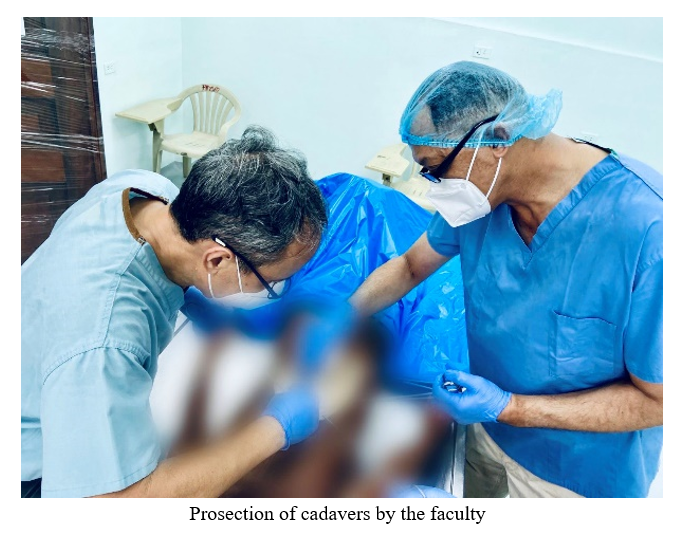Posted on September 12, 2021
For physicians, clinical skills are built on a strong foundation of the basic sciences. Gross Anatomy, one of the pillars of medical education, is part of the curriculum for first year medical students, and the standard of instruction is widely accepted to be dissection of cadavers in the laboratory setting. As a result of the COVID-19 pandemic, face-to-face classes have been severely restricted, and even medical schools have been forced to explore alternative teaching-learning platforms. In response, the University of the Philippines College of Medicine launched the Learning Enhancement in Anatomy Program (LEAP), which offers limited face-to-face instruction while complying with the guidelines set by the Commission on Higher Education.
The program aims to reinforce the students' knowledge and understanding of gross and correlative anatomy. Prosected cadavers and specimens, bones, and anatomical models were used in conjunction with virtual dissection tables and virtual reality headsets. Clinical skill stations were likewise incorporated to show the students how their anatomy lessons may be applied in the clinical setting.
From 16-30 July 2021, a total of 151 first year medical students completed the four-day program in batches. Safety protocols recommended by the PGH Hospital Infection Control Committee were strictly enforced. None of the faculty, staff, and students developed COVID-19 symptoms during or after participating.
Due to the nature of the pandemic, medical schools face the challenging uncertainties of when and how students will eventually return to a normal learning environment. This hybrid arrangement of distance education coupled with limited face-to-face encounters may become the new normal in medical education.
Jose V. Tecson, III MD, DHPEd, DPBO
Associate Professor, Department of Anatomy
College of Medicine, UP Manila


